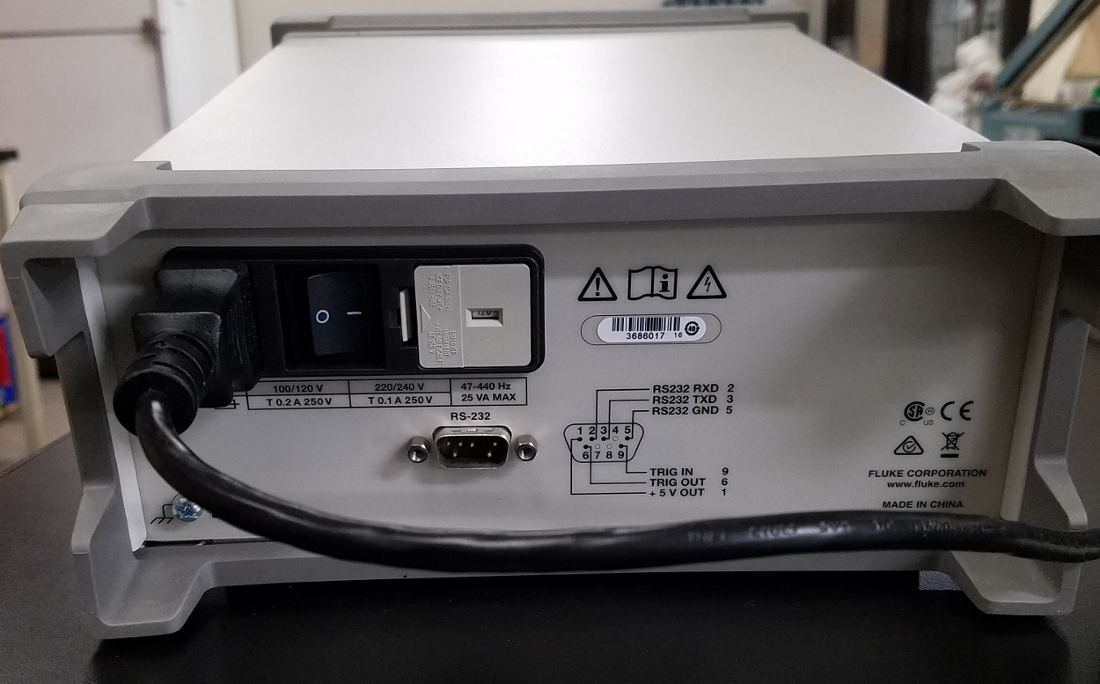Testing Resistance with a Fluke 8808A Multimeter – Review
The project was related to a lightening surge protector for a military application. The testing was simply meant to determine whether the product was wired correctly and that the commercial parts were working as expected after installation. One set of non-invasive testing was specifically oriented around high precision resistance measurements. A Fluke 8808A digital multimeter was used in order to comply with the requirements and it was more than satisfactory.
Setup
The setup of the 8808A multimeter was very simple, including manual limit tests and no limit tests.
The setup procedure for each unit and each measurement was as follows: The working area and unit under test was cleaned and separated from materials that conduct static electricity. No external connections were made other than ground, and all required connections were verified using an initial continuity test.
The Procedure setup included a safety test on each unit, verifying ground connection and no other outside connections.
Before each test, the multimeter was zeroed using a consistent source, in this case by short circuiting the connection, using the relative reference feature.
Procedure and Recording
Each connection was tested for continuity and recorded (for verification the unit was wired correctly) prior to testing. While testing for continuity, grounding was tested on each connection.
Resistance testing on each connection including grounding, components, and chassis were performed to verify high resistance or near zero resistance based on the connection tested.
Each reading was recorded 3 times using the Fluke 8808A multimeter in order to remove anomalies.
Each reading was verified using a Fluke 117 digital multimeter.
Review
The Fluke 8808A multimeter allows the measurement of two properties of a signal at the same time, providing a versatile testing environment where voltage and frequency or resistance can be measured at the same time.
6 configuration preset buttons under the display allow you to save preconfigured measurement settings for different testing environments. Saving manual configurations for frequency measurements and resistance measurements and then being able to quickly switch between testing is very convenient.
According to the Fluke website sharing features of the 8808A multimeter, the 8808A is the “only multimeter in its class to use a low-impedance operational amplifier and current-to-voltage conversion technique to eliminate the burden voltage and measure sensitive low currents.” The multimeter can measure with an accuracy of up to 100 nA.
Overall, the setup process, use, and shutdown process were very simple to learn. The multimeter had more than enough features to perform testing with and without manual limits and proved to be very accurate. Not once did the reliability fail to impress, and the portability made it even easier to use.
Features
| Technical Information | |
|---|---|
| Display | Duel 5.5-digit output that allows the measurement of two properties of a signal at the same time. Vacuum fluorescent display. |
| Vdc | Range: 200 mV to 100 Vdc,Sensitivity: 1 µV |
| Vac | True-rms ac Range: 200 mV to 750 Vac rms Sensitivity: 1 µV |
| Resistance | Range: 200 Ω to 100 MΩ Sensitivity: 1 mΩ |
| Adc | Range: 200 µA to 10 Adc Sensitivity: 1 nA |
| Aac | Range: 20 mA to 10 Aac Sensitivity: 100 nA |
| Frequency | Range: 20 Hz to 1 MHz |
| Testing | Continuity tests Diode tests 2.5, 20, and 100 samples/second measurement rates |
Jarrett Linowes
Mechanical Engineer
omniamfg@gmail.com
Did I miss anything you are interested in? Send me an email or comment below!







